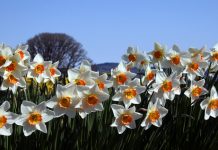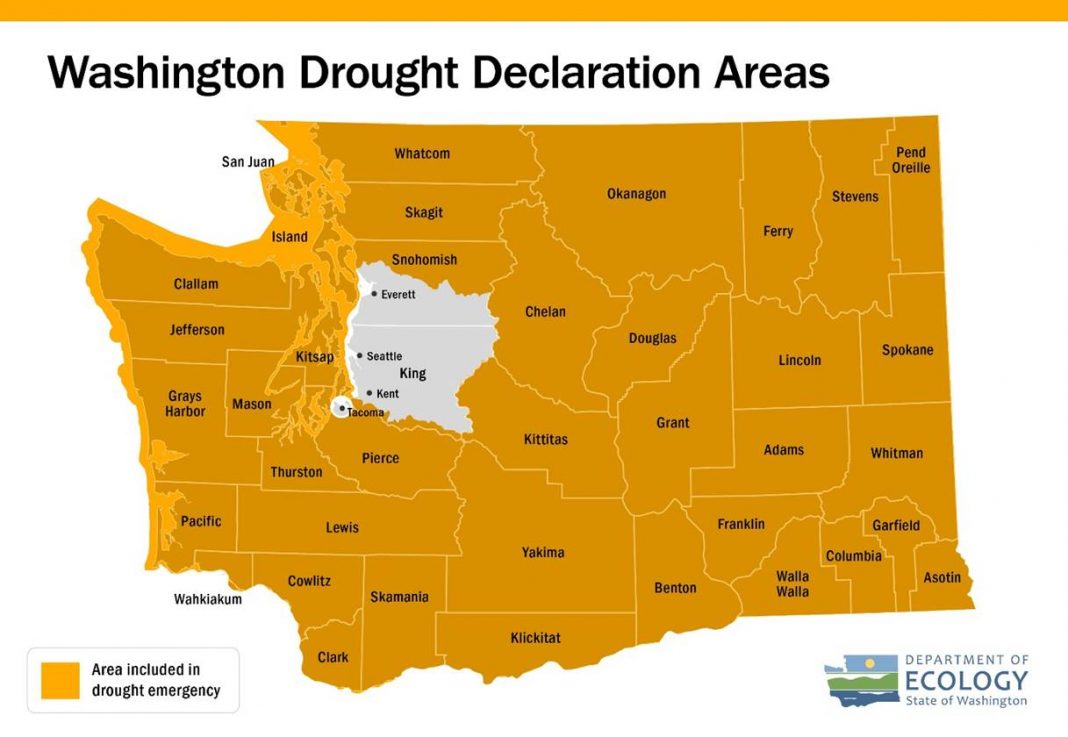Submitted by Department of Ecology State of Washington
A historically dry spring and summer, followed by a record-breaking heat wave have affected water supplies across Washington, prompting the Washington Department of Ecology to issue a drought emergency for most of the state. The only areas excluded from the emergency declaration are Seattle, Tacoma and Everett.
In late May, the fourth-driest March through April on record prompted Ecology to issue a drought advisory for 29 counties. Dryness persisted through June. Averaged statewide, March through June precipitation ties 1926 as the second driest such period since 1895. A heat dome in late June brought triple-digit temperatures and smashed all-time records across the state, rapidly worsening drought conditions.
Now Ecology, along with the departments of Fish and Wildlife, Agriculture, and Natural Resources, are reporting signs of stressed fish; farmers and ranchers are being forced to cut back on irrigation; and wildfires are burning through dry vegetation.
“Farmers’ crops are failing and ranchers are losing livestock because of these dry conditions, extreme heat, and lack of water,” Inslee said. “We’re experiencing more droughts in our state as the climate warms. These dry conditions, combined with scorching heat, are putting our way of life at risk. We must continue to act on climate change to protect our state.”
Farmers and ranchers without irrigation in eastern Washington were among the first to feel the effects of the drought, with some reporting up to a 50 percent loss of wheat crops and difficulty finding feed for livestock. Rising water temperatures in the lower Yakima, Okanagan, and Snake rivers reached levels lethal to some fish, including threatened salmon species.
Water supplies in Eastern Washington have dwindled, forcing Ecology to issue curtailments earlier than normal for some irrigators.
There is little hope for relief before fall. According to the Office of the State Climatologist newsletter, the three-month outlook for July through September shows increased chances of above normal temperatures and below normal precipitation for the entire state.
Ecology Director Laura Watson said Washington’s water supplies face an increasingly uncertain future as the impacts of climate change accumulate.
“We’re now in the literal heat of summer and the driest time of year,” said Watson. “As our climate warms, droughts will be more frequent. Focusing on additional water storage, water efficiency and reuse, and changes in agriculture practices will help Washington be more resilient and protect water for communities, farms and fish.”
The only parts of the state not under the drought declaration are the metropolitan centers of the Puget Sound area. Seattle, Tacoma and Everett are expected to have sufficient water storage to meet residential and commercial needs through the summer, and to maintain adequate water levels in nearby rivers to protect fish.
What is a drought emergency declaration
A drought emergency means water supply is projected to be below 75 percent of average, and there is a risk of undue hardship to water users and uses.
A formal drought declaration authorizes Ecology to take certain measures for the purpose of providing emergency drought relief:
- Expedite processing for emergency drought permits
- Process temporary transfers of water rights
- Provide funding assistance for public entities
- Hold public education workshops
Report observations of drought conditions
Individual actions can make a big difference during a drought. Washington residents should check with their local water utility to learn what conservation measures are recommended in their area.
You can also help Ecology monitor the drought by submitting observations and photographs to the Conditions Monitoring Observation System.
Water users worried their water supply is at risk of failing should contact the nearest Department of Ecology Regional Office.




































